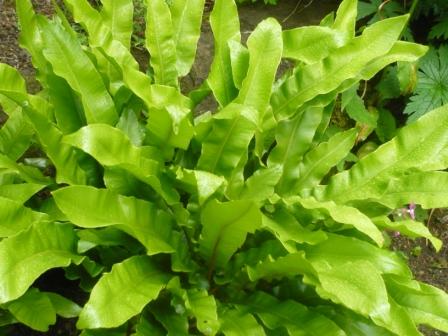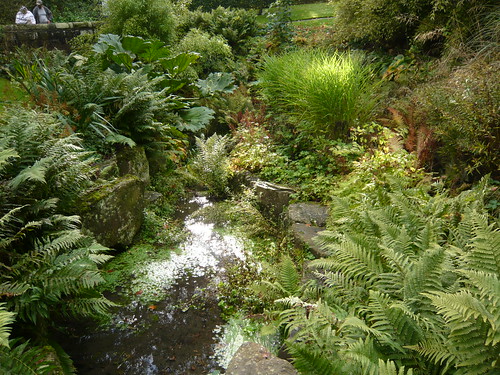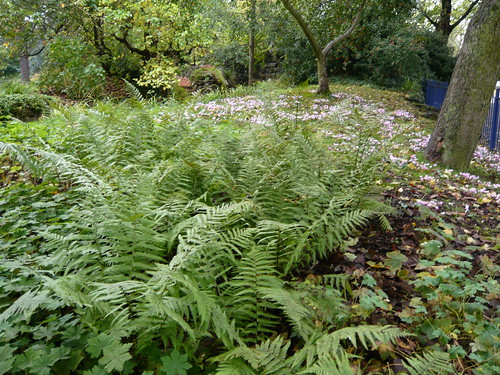Growing Ferns
A Fernery can be a fine thing Evergreen Hart’s Tongue Fern
Asplenium scolopendriums or spleenworts are a good contrast plant in a shady fern border. The shape of the long evergreen fronds gave rise to the common name Hart’s Tongue Fern.
Growing Hart’s Tongue Ferns
- They provide year round interest being ferns with simple, undivided fronds. The leaves are 4-24 ” long and 2-3″ broad.
- Once planted, hart’s tongue fern grows slowly and needs little attention apart from annual mulching and tidying in spring.
- Plants grow on lime-rich substrates including moist soil and damp crevices in old walls, most commonly in shaded situations.
- In sunny sites the leaves turn a sickly yellow.
- They are not suitable for growing in pots and containers.
- Crispum group have fronds with crimped margins making them appear plumose or feather like. Boltons Needle is one specific form.
- Asplenium scolopendrium muricatum has narrow dark green fronds with raised wrinkly edges.
- Asplenium trichomanes have glossy green oval, pinnae paired along the length of a purplish stem. Ideal for walls and crevices.
- Asplenium scolopendriumLaceratum Kays is a form with wide open, ovate fronds with deeply cut margins and miniature crested tips.
- See others at World of Ferns
In the Yorkshire Dales National Park the ferns make an important contribution to the local flora. Hart’s-tongue fern is shade-tolerant and prefers lime-rich soils and can be found in dark and damp environments including the grykes of limestone pavements.
Bracken or Pteridium is a genus of large, coarse ferns in the family Dennstaedtiaceae. Historicallly bracken was used to produce thatch, animal bedding, compost and used in herbal medicine.


